Juarez, Mexico
 About a mile from my downtown El Paso hotel is the Mexican border, which leads you to Juarez, Mexico. The two cities form the largest international border community on Earth.
About a mile from my downtown El Paso hotel is the Mexican border, which leads you to Juarez, Mexico. The two cities form the largest international border community on Earth.It also has a mixed reputation. Some call it "the capital of murdered women" due to reports of rapes, abductions and murders of young females early in this decade.
 Within minutes of crossing the border, I was offered "information," "massage parlors" and "beautiful women" at taxi stands. This went beyond the normal begging that you would find in a poorer country, and there was some of that. This can be due to one of two reasons: 1) I'm a gringo (pale skin and blue eyes give it away here), or 2) it's painfully obvious that I haven't had a date in a while.
Within minutes of crossing the border, I was offered "information," "massage parlors" and "beautiful women" at taxi stands. This went beyond the normal begging that you would find in a poorer country, and there was some of that. This can be due to one of two reasons: 1) I'm a gringo (pale skin and blue eyes give it away here), or 2) it's painfully obvious that I haven't had a date in a while.Both, perhaps?
In the back of my mind, I remembered some of the warnings that my friends had given me about not walking in Juarez alone -- and I was by myself.
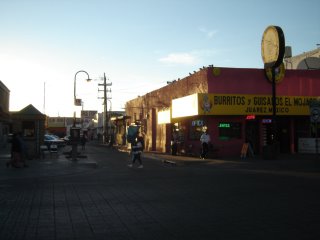 Another thing I noticed was the total lack of English on the Juarez side of the border. On the El Paso side, English and Spanish were used side by side on street signs. Here, with the exception of a few places, only the latter was the norm here. Was this because Americans were not supposed to walk around this area? Perhaps it was more of an ethnic pride -- something along the lines of "you are in our country now". It was hard to say.
Another thing I noticed was the total lack of English on the Juarez side of the border. On the El Paso side, English and Spanish were used side by side on street signs. Here, with the exception of a few places, only the latter was the norm here. Was this because Americans were not supposed to walk around this area? Perhaps it was more of an ethnic pride -- something along the lines of "you are in our country now". It was hard to say.I did get more than my fair share of "what are you doing here" looks, some kind, some not.
 One place Americans were clearly welcome was in pharmacies. U.S. citizens looking to avoid the high cost of drugs in their home country can come here and get the cheap stuff.
One place Americans were clearly welcome was in pharmacies. U.S. citizens looking to avoid the high cost of drugs in their home country can come here and get the cheap stuff. If I did decide to go to a massage parlor, I could always pick up some Viagra, Cialis, or Levitra before I go. If you're going to go the extra mile and pay for a prostitute, you might as well perform well.
If I did decide to go to a massage parlor, I could always pick up some Viagra, Cialis, or Levitra before I go. If you're going to go the extra mile and pay for a prostitute, you might as well perform well.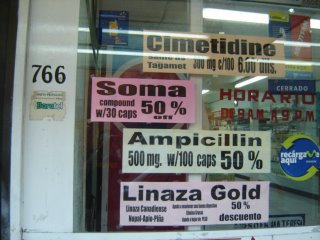 There were other drugs being offered, although I am not sure what this stuff does.
There were other drugs being offered, although I am not sure what this stuff does.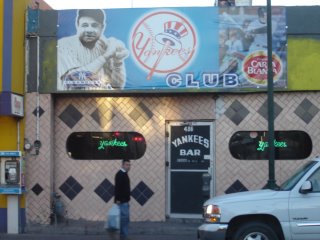 I bet they like Americans in this "Yankee" bar.
I bet they like Americans in this "Yankee" bar. All is not bad in Juarez, however. In fact, except for the offers of prostitutes (which some may not mind), the "what are you doing here" looks, and the aggressive panhandling, Juarez seemed like a fairly vibrant, if economically challenged, city. The Our Lady of Guadalupe Mission dominates the skyline, and according to this online city guide is an important part of the city:
All is not bad in Juarez, however. In fact, except for the offers of prostitutes (which some may not mind), the "what are you doing here" looks, and the aggressive panhandling, Juarez seemed like a fairly vibrant, if economically challenged, city. The Our Lady of Guadalupe Mission dominates the skyline, and according to this online city guide is an important part of the city:Nuestra Senora de Guadalupe de El Paso del Norte y do los Mansos, was the first mission established in the area. The present structure was completed in 1668. A joint effort of Mexican, Mansos Indian and Spanish labor, the church took six years to build. Today it remains the oldest surviving church structure in the area. Next door is the Juarez Cathedral with its Neo-classical facade. There's a large iron fence around the two churches with an open gate on the south side. Near this gate you can often find the mission's self-appointed tour guide, Angel. Angel is an old man with salt and pepper hair, usually in a gray suit and matching fedora, who patiently waits to give tours of both churches. He'll walk you through the old mission and cathedral and point out lots of very interesting details. It's worth a substantial tip to retain his services. This is an active parish so you'll find people inside praying and meditating - reverence is expected. Located on Av. 16th de Septiembre, two blocks west of Av. JuarezIt was a nice place to say a prayer.
 Another fun place was the Museo de Historico de Ciudad Juarez (Juarez Museum of History), which:
Another fun place was the Museo de Historico de Ciudad Juarez (Juarez Museum of History), which:Located in the Ex-Aduana (former Customs House) building in downtown Juarez, this museum chronicles the history of Juarez and the state of Chihuahua. Featuring permanent and visiting exhibits, there is much to see about the history of the area from prehistoric times to the 20th Century. The Mexican Revolution and the exploits of Pancho Villa are prominent parts the the displays. All exhibits are in Spanish. Located at Av. Juarez and Av. 16th de Septiembre.I'd like to say I learned a lot here, but it was all in Spanish.
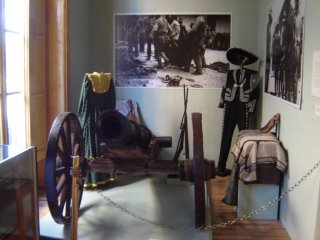 They had cannons though, that's cool, and...
They had cannons though, that's cool, and... ...dead people are always fun.
...dead people are always fun.According to this website, Juarez was the location of the last battle of the Mexican revolution.
There are guided tours of the city that depart from El Paso, which should make any weary tourists feel safer. I had to be a little different and immerse myself in the culture, to the extent that two walking trips over the border can. If anything, I wish I had paid more attention in Spanish class in high school.
I'm sure I just scratched the surface of the place.
RELATED LINKS:
America's Treasures

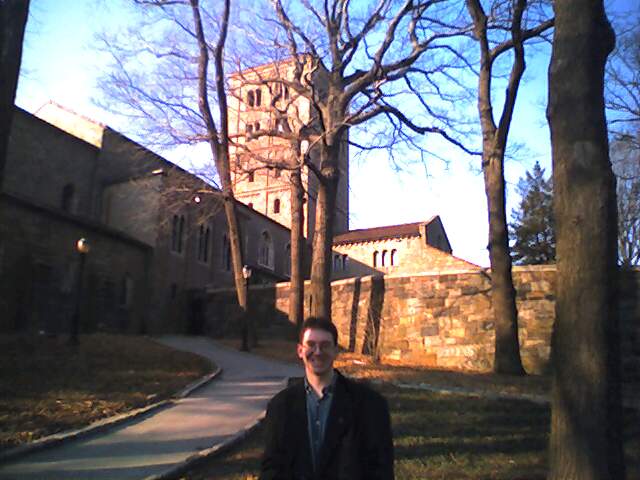

2 Comments:
I'd need a really good lawyer.
As someone who lives in New Mexico & is a frequent visitor to Juarez I"m glad to see your comments & that you enjoyed your visit. Juarez/El Paso/Las Cruces are dynamic, vibrant communities that are worth the time to visit and get to know.
Post a Comment
|<< Home